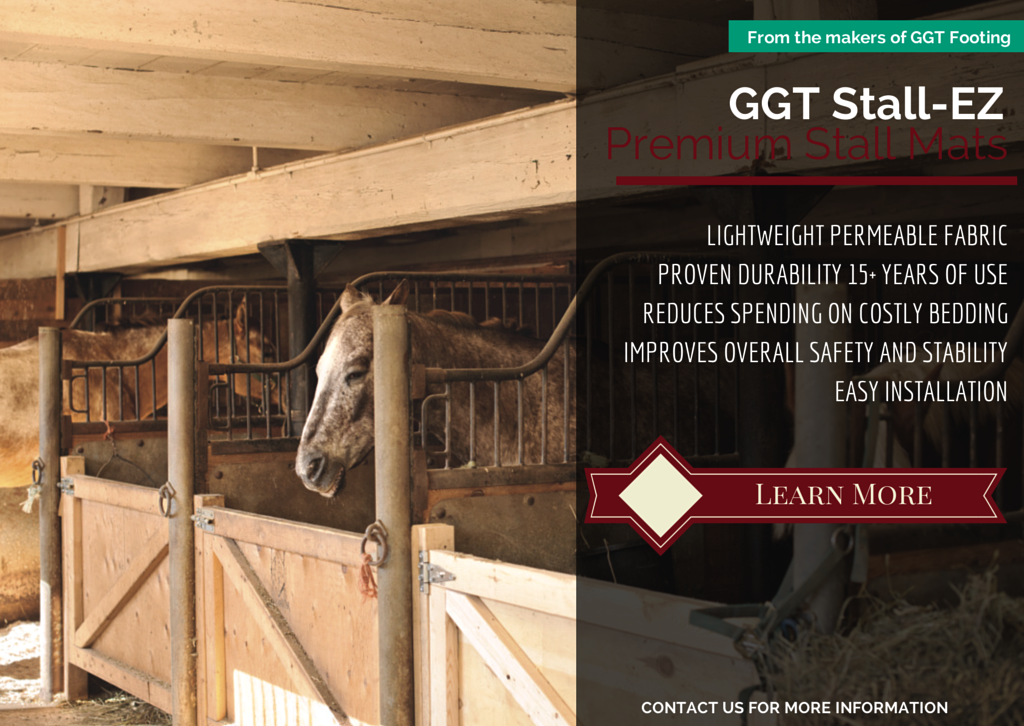Properties of Riding Surfaces
When talking about riding surfaces, there are three basic features to think about. One is the shock absorbing features of the surface. A very hard surface will cause repetitive shocks to the horse's body, which over time can lead to arthritis. A very soft surface is, however, no good either- the horse won't have anything to push against and will struggle to keep moving. Think of the difference in effort between walking on pavement versus walking on deep sand.
A second important feature to think about is traction. Running and jumping on dry packed earth is relatively easy; the horses can grip the ground and move with confidence. Let that dirt get wet, and all of a sudden the horses are slipping and sliding.
A third feature is shear, or the stability of the footing underfoot. Concrete, hard-packed earth and turf are all completely stable underfoot. Sand and deep mud are unstable underfoot, shifting unpredictably as the horse tries to work on it.

Properties of Sand
Most horse arena footings are primarily composed of sand. As mentioned above, working on sand can be tiring. It can also lead to tendon and ligament injuries as the horse struggles to find somewhere to push off of and the foot slips in the sand, hyper-extending a joint. Wetting the sand down helps a lot- the surface becomes firmer and more stable. In addition to wetting down sand, additives can be mixed into the sand to improve its stability, shock absorption properties, and even to reduce the amount of dust it produces.
Additives
When we take a detailed look at GGT footing what find is that the basic additive is a shredded geotextile. Adding this material to sand has an effect similar to that of adding roots into dirt- it stabilizes the sand. Once the sand has been stabilized by the geotextile it no longer slides unexpectedly underfoot. The surface becomes much more springy and easier to work on and begins to resemble a good turf surface in its shock-absorption and shear properties. Added benefits are that the textile absorbs water and keeps the sand damp longer, reducing the need for frequent watering of the arena. It also keeps the sand from packing down underfoot, so the arena will need to be dragged less frequently.
In addition to its basic textile additive, GGT also makes other additives. The type of riding done on the surface and the type of sand used dictate whether adding these makes sense or not. For example, some types of sand are naturally more stable than others; if the arena has a particularly unstable type of sand, adding extra stabilization in the form of GGT fibers can help. Or, if the type of riding being done on the surface is particularly concussive, such as in jumping large jumps, improving the shock-absorbing capabilities of the surface by adding elastic GGT fibers might be a good idea.
The fibers and textiles used in GGT footing are made out of geotextiles. These synthetic fabrics are frequently used in landscaping because they are non-toxic, don't rot and don't break down. These same features make them ideal for use in horse arenas.
We are an authorized GGT dealer, and an expert in constructing and rehabilitating horse arenas. If you have any questions, contact us today.



